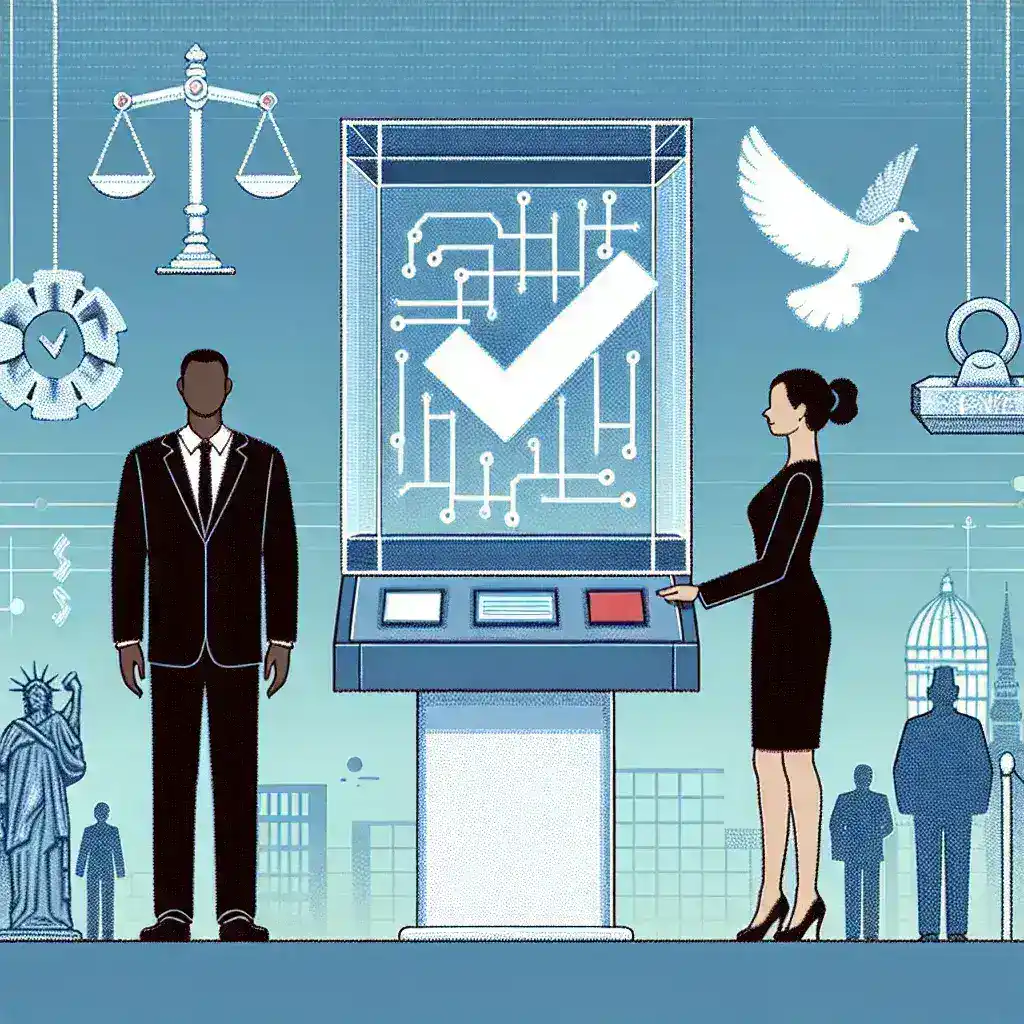Introduction
In recent years, the role of technology in political elections has become increasingly significant. As concerns about electoral integrity and transparency grow, innovative solutions are needed to bolster trust in democratic processes. One such solution is blockchain technology, which has the potential to revolutionize how elections are conducted. This article will explore how blockchain can improve the transparency of political elections, ensuring that the voice of the electorate is heard and respected.
Understanding Blockchain Technology
Before delving into its application in elections, it is important to understand what blockchain technology entails. Blockchain is a distributed ledger technology (DLT) that allows data to be stored across a network of computers, making it secure and transparent. Each piece of data, or “block,” is linked to the previous one, forming a “chain.” Because the chain is distributed and not controlled by a single entity, it is inherently resistant to tampering and fraud.
Key Features of Blockchain
- Decentralization: Blockchain operates on a peer-to-peer network, reducing the risk of centralized control and manipulation.
- Transparency: All transactions are recorded in a public ledger, allowing anyone to view and verify the data.
- Immutability: Once data is recorded on the blockchain, it cannot be altered or deleted, ensuring the integrity of the information.
- Security: Blockchain uses cryptography to secure data, making it difficult for unauthorized parties to access or modify information.
Challenges in Traditional Voting Systems
Traditional voting systems face several challenges that undermine the transparency and integrity of elections. Some of these challenges include:
- Voter Fraud: Cases of voter impersonation, double voting, and ballot tampering can distort election outcomes.
- Lack of Transparency: Many election processes are complex and opaque, leading to public distrust.
- Mismanagement: Errors in vote counting or mismanagement of polling stations can lead to discrepancies in results.
How Blockchain Enhances Election Transparency
Blockchain technology can address many of the challenges faced by traditional voting systems. Here are some ways it can enhance transparency in political elections:
1. Secure Voter Registration
Blockchain can streamline the voter registration process by securely storing voter identities in a decentralized ledger. This reduces the chances of identity theft and ensures that only eligible voters can register. The transparent nature of blockchain also allows for real-time verification of voter registration, making it easier to detect and prevent fraudulent registrations.
2. Tamper-Proof Voting
Implementing blockchain in the voting process allows for the creation of tamper-proof digital ballots. Each vote cast is recorded as a transaction on the blockchain, making it impossible to alter or delete once submitted. This ensures that every vote is accounted for and that election results reflect the true will of the people.
3. Real-Time Vote Tracking
With blockchain technology, voters can track their votes in real time. After casting their vote, they can receive a unique identifier associated with their transaction on the blockchain, allowing them to verify that their vote was recorded accurately. This feature enhances voter confidence and mitigates concerns about vote manipulation.
4. Transparent Audit Trails
Blockchain inherently creates a transparent audit trail of all voting transactions. Election officials can access this information to conduct thorough audits, ensuring that all votes are counted correctly. The transparency of the audit trail fosters greater public trust, as anyone can verify the integrity of the election process.
5. Decentralized Election Management
Decentralizing the management of elections through blockchain allows for greater participation from various stakeholders. It minimizes the risk of corruption or bias by distributing control across multiple parties. This approach can lead to more democratic and inclusive election outcomes, as various entities contribute to the oversight of the election process.
Case Studies: Blockchain in Action
Several nations and organizations around the world have begun to explore the use of blockchain for elections. Here are a few notable examples:
- Estonia: Estonia has successfully implemented a blockchain-based voting system for its e-Residency program, allowing citizens to vote online while maintaining security and transparency.
- West Virginia, USA: In the 2020 elections, West Virginia used blockchain technology to allow overseas military voters to cast their ballots securely via a mobile app.
- Switzerland: Various Swiss cantons have experimented with blockchain-based voting systems to enhance transparency and security in their electoral processes.
Challenges and Considerations
While blockchain holds immense potential for improving election transparency, it is not without challenges. Some considerations include:
- Digital Divide: Not all voters may have access to the technology or internet connectivity required to participate in blockchain-based voting.
- Technical Challenges: Implementing blockchain requires substantial technological infrastructure and expertise, which may not be available in all regions.
- Regulatory Framework: Legal frameworks may need to be adapted to integrate blockchain technology into existing electoral processes.
Conclusion
Blockchain technology presents a promising solution to the challenges facing political elections today. By improving transparency, security, and trust in the electoral process, blockchain can empower voters and reinforce the integrity of democracy. As more nations explore the potential of this innovative technology, it is essential to address the challenges and considerations that arise to ensure a successful implementation. Embracing blockchain technology in political elections may well be the key to a more transparent and trusted democratic process.

